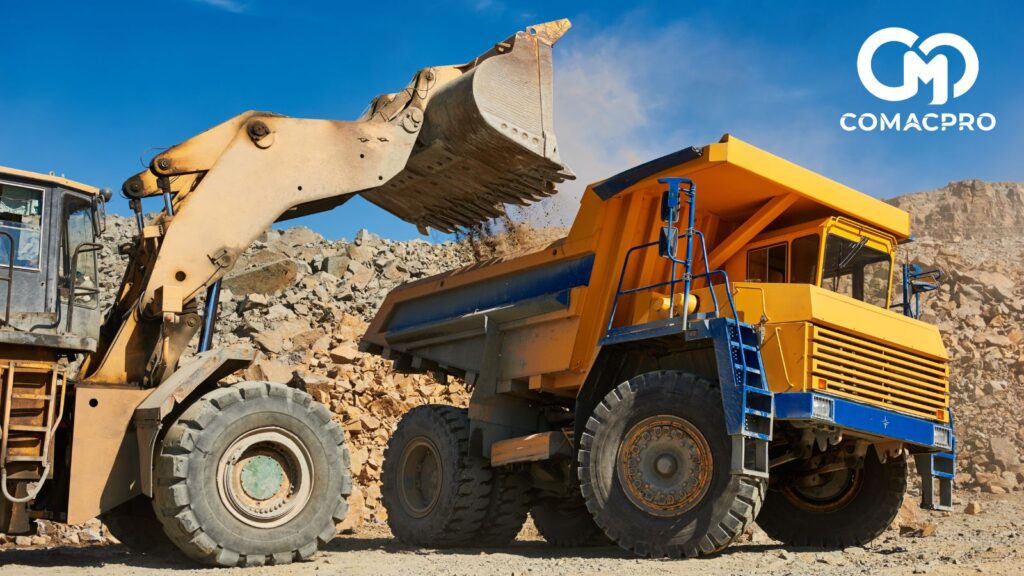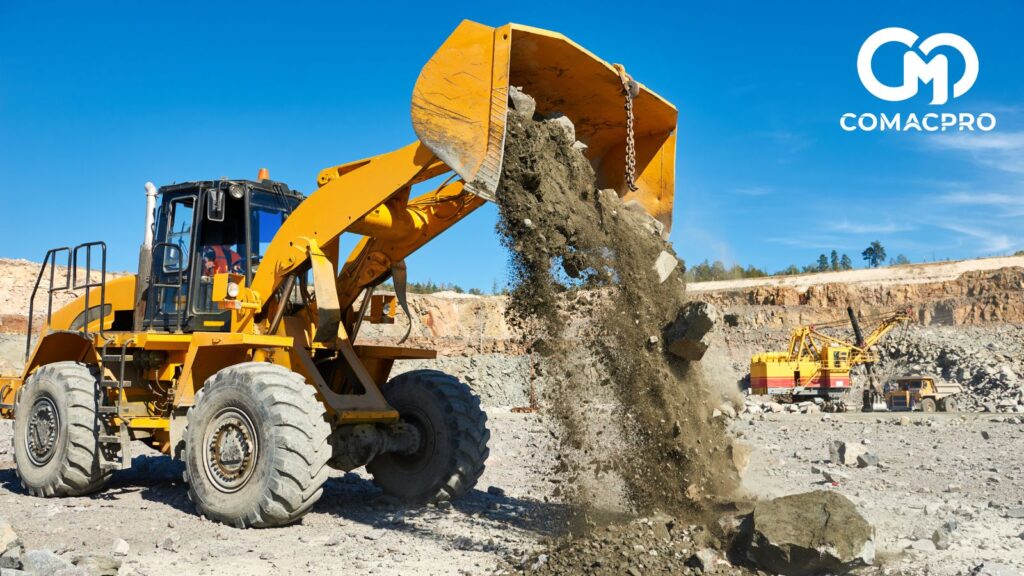Primarily used for heavy-duty tasks such as construction site leveling or mining operations, wheel loaders play a crucial role in various industries. But have you ever truly understood how a wheel loader is built and how it operates? This article will help you gain a clearer insight into this type of machinery.
What is the structure of a wheel loader?
Well-known in the construction industry, the wheel loader (also called a front-end loader) is mainly used for scooping soil, rocks, and transporting materials across complex terrains.

Wheel loaders are widely used in construction, mining, and logistics (such as loading and unloading goods in warehouses or yards).
To meet demanding workloads and frequent operations, a wheel loader is typically composed of seven main components:
- Operator cabin: The control area where the operator handles and monitors the machine’s operations.
- Engine: Usually a 2-, 4-, or 6-cylinder water-cooled engine. The most commonly used is the 4-cylinder type, with a typical power range from 37 to 92 kW.
- Loader bucket: The bucket size varies depending on the intended use. There are different bucket capacities for different jobs.
- Transmission system: Enables smooth movement through components like the torque converter, gearbox, and gear shift (forward and reverse).
- Hydraulic system: Allows precise control of the loader’s movements and operations.
- Braking system: Ensures safety when operating on sloped or uneven terrain.
- Steering system: Allows the operator to maneuver the loader, drive straight, or turn as needed.
How does a wheel loader work?
In order to operate a wheel loader effectively, the operator must not only understand the machine’s structure but also grasp its basic working principle.

Overall, the operating mechanism of a wheel loader is relatively simple. What’s crucial is the operator’s ability to accurately calculate the bucket’s working range for optimal efficiency.
The operation process of a wheel loader follows a cyclical workflow, consisting of six stages:
- Approach: The loader moves toward the area where material needs to be scooped.
- Scooping: The operator lowers the bucket using hydraulic cylinders, then lifts the bucket while collecting material.
- Retreat: The bucket is pulled back from the digging area while being raised or curled.
- Transport: The loaded bucket is moved to the dumping location.
- Dumping: Material is discharged from the bucket, typically by tilting or opening the bucket bottom.
- Return: The loader backs up to the original scooping location to begin a new cycle.
This article has provided an overview of the structure and working principle of a wheel loader. Comacpro hopes you’ve gained valuable knowledge about this essential piece of construction equipment. If you have any questions, feel free to contact us today for consultation and support.
Vietnam’s largest equipment purchasing platform – Comacpro
Headquarters: ACCI Building, 210 Le Trong Tan, Thanh Xuan District, Hanoi City
Southern Office: Eco Green Saigon, Nguyen Van Linh Street, Tan Thuan Tay, District 7, Ho Chi Minh City
Northern Hotline: 0865.919.939
Southern Hotline: 0865.1515.06
Email: [email protected]
Website: https://comacpro.net
Youtube: https://www.youtube.com/@ComacProOfficial